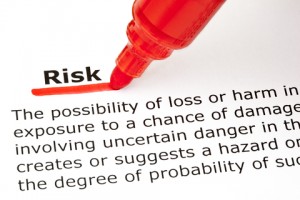 Lifting Operations and deadly mistakes
Lifting Operations and deadly mistakes
Human carelessness can be quite astounding, especially when it comes to health and safety matters. However, when companies take disregard for safety too far in their pursuit of profits, they answer to the law. A London firm recently felt the full blunt of the law when one of its workers was killed in a dangerous lifting operation. It had seriously flaunted Regulation 8 of the Lifting Operations and Lifting Equipment Regulations 1998:
“(1) Every employer shall ensure that every lifting operation involving lifting equipment is (a) properly planned by a competent person; (b) appropriately supervised; and (c) carried out in a safe manner. (2) In this regulation ‘lifting operation’ means an operation concerned with the lifting or lowering of a load. ”
Bearing the Cost of Safety Breaches
According to a Health and Safety Executive (HSE) report, on 26February 2014 Chelmsford Crown Court ordered Bouygues UK Ltd of York Road, London, SE1 to pay over £250,000 in costs and fines following serious safety breaches that resulted in a fatality. On the date of the accident, the firm was the principal contractor overseeing the Broomfield Hospital extension project.
44-year-old Guilherme de Oliveira was working as a banksman on 10 November 2008, helping form the concrete structure for the hospital extension by fixing beams across supporting towers. A tower crane was being used to lift the beams. He climbed the support towers together with another banksman in order to unhook the lifting chains from the seven metre long beam. It was positioned nearly three metres above ground level.
That day in Essex the weather took a turn for the worse and wind speeds increased. Mr. de Oliviera did not get a chance to disconnect the chains on the beam on his side. There was a sudden gust of wind, with speeds far beyond those considered safe working parameters of the tower crane. The slew brakes slipped and the crane yielded to the power of the wind.
As the crane swung, it moved with the still-connected beam. Mr. de Oliviera was swept off by the beam and crushed between it and an adjacent tower. He sustained fatal crush injuries at wind speeds exceeding 72km/h.
Investigations by HSE revealed that Bouygues had breached Regulation 8 of the Lifting Operations and Lifting Equipment Regulations. There were four tower cranes being operated at the site, each one fitted with a sensor for measuring wind speed. It was pre-set to provide an amber warning at 50km/h and a red warning at 72km/h. The sensors were connected to the site office computer so that the managers could be able to monitor data and supervise the lifting operations.
When the accident occurred, no one was monitoring the computer. There were also on-site arrangements allowing for crane operators to do their own checking on available wind speed displays. This meant that the lifting would have stopped only if the crane operators considered it necessary. It did not mean they would heed the maximum wind speed limit.
The firm pleaded guilty and was fined £175,000 as well as ordered to pay costs amounting to £80,000.
Taking Safety Lessons to Heart…
Lifting operations are a common sight at construction sites but they are some of the most dangerous operations. The industry has responded to their high potential for serious injury by putting into place regulations and guidelines that ensure protection of the wellbeing of all. It goes without saying that contractors must then have an adequate taskforce to man all the machinery and equipment before the construction projects begin. These workers should also have the proper training and competence.
Guilherme de Oliveira’s life and others like him could be saved if contractors treated adequate planning and supervision with the seriousness they deserve. They should put proper management procedures in place so that in case of extreme weather conditions on a site, suitable steps will be taken to shut down the tower cranes thus preventing potential fatalities.
Sometimes there is no avoiding systemic failure but there must never be room for human error. Contractors then must observe all regulations regarding work equipment and machinery. They should follow the advice of HSE Inspector Dominic Elliss to “review the effectiveness of their own controls to ensure safety on construction sites.”
Now its your turn
As always, we’d love your comments below

A chartered (fellow) safety and risk management practitioner with 20+ years of experience. David provides a healthy dose of how-to articles, advice and guidance to make compliance easier for construction professionals, Architects and the built environment. Get social with David on Twitter and Linkedin.



